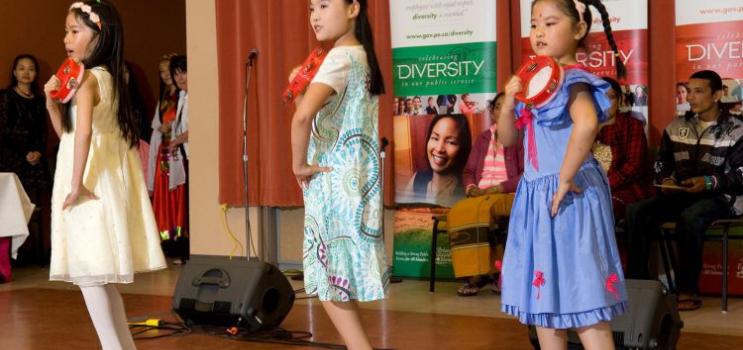Diversity Events and Facts for PEI

Prince Edward Island enjoys a mix of different ethnicities, cultural groups, religions, sexual orientations, gender identities and abilities from all over the world. The provincial government's Public Service Commission values this diversity, because it is a source of strength, vitality and prosperity.
Popular cultural diversity festivals in PEI:
- Lennox Island Pow Wow festivals
- DiverseCity multicultural street festivals
- Tapestry- Town of Stratford multicultural festival
- Chinese New Year
- Buddhist Vesak day
- Deepawali Indian festival
- Lebanese New Year
- Eid Muslim festival
- Nepalese Vijay Dashami Festival
- International Tea House
- Cross-cultural night games with PEI ANC
Population
- Total aboriginal population in PEI is estimated to be 5,000 people.
- Majority of visible minorities in PEI is as follows:
- South Asia Origins estimated to be 500 people including Punjabi, Nepali, Sri Lankan, Pakistani and Bangladeshi.
- East and Southeast Asian origins estimated to be 2,560 people including Chinese, Japanese, Korean, Vietnamese, Mongolian and Taiwanese.
Languages
Majority of the population in PEI speak English or French as their first language (English is the official language).
- 87.1 per cent speak English
- 0.1 per cent speak French
- 12.3 per cent speak English and French
- 0.5 per cent speak non-official; languages
- Aboriginal languages include Mi’kmaq and Inuktitut
Other languages spoken in PEI are:
- Chinese
- Italian
- Germany
- Polish
- Spanish
- Dutch
- Russian
- Punjabi
- Hindi
- Nepali
- Sinhala
- Tamil
- Korean
- Persian
The top three non-official languages spoken in PEI are:
- Chinese
- Dutch
- German
Religion
Most people in PEI are:
- Christian
- Catholic
- Anglican
- Baptist
Other common religions in PEI are:
- Hinduism
- Buddhism
- Islam
- Sikhism
- Jewish
Source – Statistics Canada 2012
Disability Facts
The total number of people with a disability in PEI was 18,840 for 2012.
The Canadian Survey on Disability (CSD) is a national survey of Canadians aged 15 and over whose everyday activities are limited because of a long-term condition or health-related problem.
- In children aged five to 14 years-old the most common disability are learning disabilities (69.3 per cent) and chronic conditions including asthma, severe allergies, ADHD and Autism (66.6 per cent)
- In the adult working age population, the most common disability is pain (74.4 per cent).
- In seniors, aged 65 years plus, the most common disability is mobility (76.4 per cent).
Source: Statistics Canada, Participation and Activity Limitation Survey, 2006 and 2012.